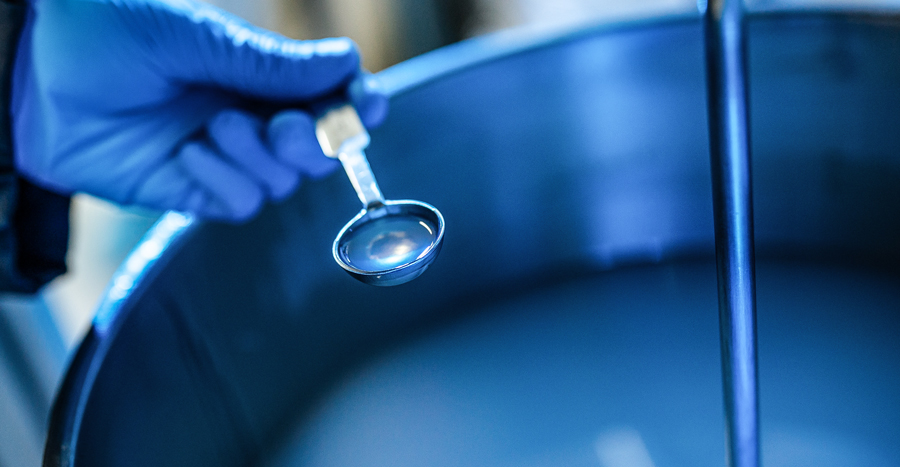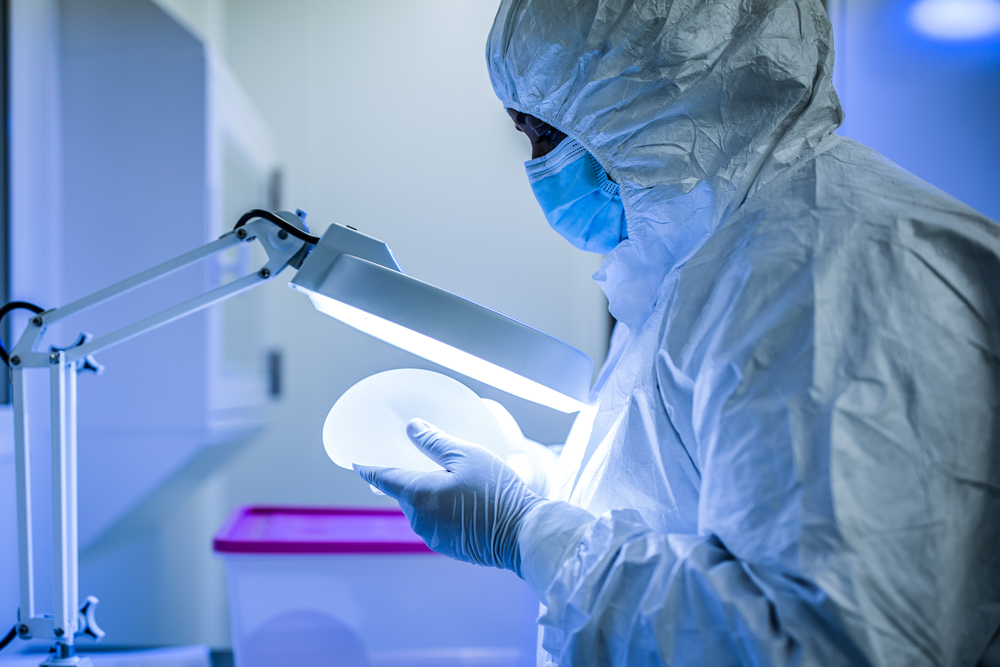Silicone technology
Leverage our 30 years of experience in silicone
Symatese long term experience in silicone transformation
SYMATESE AESTHETICS works with long term biocompatible silicone, FDA approved in order to design and produce medical devices with a very high safety level.
A perfect biocompatible material
Silicone is a polymer that contains silicon, combined with carbon, hydrogen and oxygen and, in some cases, other elements.
Their consistency varies from liquid (oils) to hard plastic, including gel (Breast implants) and gum (shell of breast implants).
The backbone of the silicone polymers used for nearly all components of silicone gel–filled breast implants is PolyDiMethylSiloxane (PDMS), in which the repeating chemical unit is dimethylsiloxane. This basic structure can be modified to obtain silicone in the form of a fluid, a gel, or an elastomer (a polymer with rubber-like elasticity), depending on the length of the polymer chains and extent of cross-linking of these chains (Mohebali, 2018).
Silicone gels, used to fill implants, can be produced by varying viscosity (cohesivity, firmness) by progressively increasing the length of the polymer chains or the degrees of cross-linking (Maxwell, 2017).
Silicone elastomers, used for the shell of implants, are obtained through extensive chemical cross-linking of the silicone polymer by forming chemical bonds between adjacent chains (Maxwell, 2017; Mohebali, 2018). Silicone elastomers also incorporate a filler material of amorphous silica that imparts greatly increased strength to the material (Maxwell, 2017).
Silicone is one of the best known biocompatible materials in the world and has been used as a very safe material for many years in the manufacture of implantable medical devices. Its biocompatibility is reinforced by a very low volatility and a strong chemical stability.
It is the perfect material to Rebuilt, Restore and Rejuvenate for many medical specialities including reconstructive plastic and aesthetic surgery.


Safety and Performance
Symatese Aesthetics works with polydimethylsiloxane silicone, polymethylphenylsiloxane silicone and gel silicone. These silicones are of the highest purity and long-term stability for implantable medical devices. These raw materials meet all USP Class VI and many EN ISO 10993-1 test requirements.
Quality of the medical device does not rely only on the Silicone but also on how we process them. With more than 30 years of experience, SYMATESE AESTHETICS has developed innovative processes to manufacture performant and very safe implantable medical devices.
Non medical silicone utilisation
Aviation - Aerospace:
From the engine and outside windows to the cockpit and main cabin, silicone seals are found everywhere. The goal of every aircraft carrier model is to keep crew members and passengers safe, so it’s important to ensure that every vulnerable component is protected from harsh weather conditions found at high altitudes. That is where silicone’s excellent resistance properties come into play.
Electronics:
Silicone compounds are used in thousands of electronic systems to seal, bond, coat, and encapsulate components, enabling them to perform reliably under challenging conditions. Formulators continue to improve silicones to make them easier to use and to offer a wider variety of properties.
Drug Delivery system:
Some excipient-grade silicone allow drug delivery systems to help get crucial medications to patients. As example, intravaginal rings (IVR) and stents can help in carrying drugs.
Aviation - Aerospace:
From the engine and outside windows to the cockpit and main cabin, silicone seals are found everywhere. The goal of every aircraft carrier model is to keep crew members and passengers safe, so it’s important to ensure that every vulnerable component is protected from harsh weather conditions found at high altitudes. That is where silicone’s excellent resistance properties come into play.
Electronics:
Silicone compounds are used in thousands of electronic systems to seal, bond, coat, and encapsulate components, enabling them to perform reliably under challenging conditions. Formulators continue to improve silicones to make them easier to use and to offer a wider variety of properties.
Drug Delivery system:
Some excipient-grade silicone allow drug delivery systems to help get crucial medications to patients. As example, intravaginal rings (IVR) and stents can help in carrying drugs.
Our background in silicone
Our organisation started 30 years ago with the creation of PEROUSE PLASTIE which became a leader in the silicone gel-filled breast implants market with its own brand PERTHESE.
Based on this strong experience and huge investments in calculation by finished elements, the SYMATESE AESTHETICS team developed , new breast implants aiming to improve their safety and performance.



